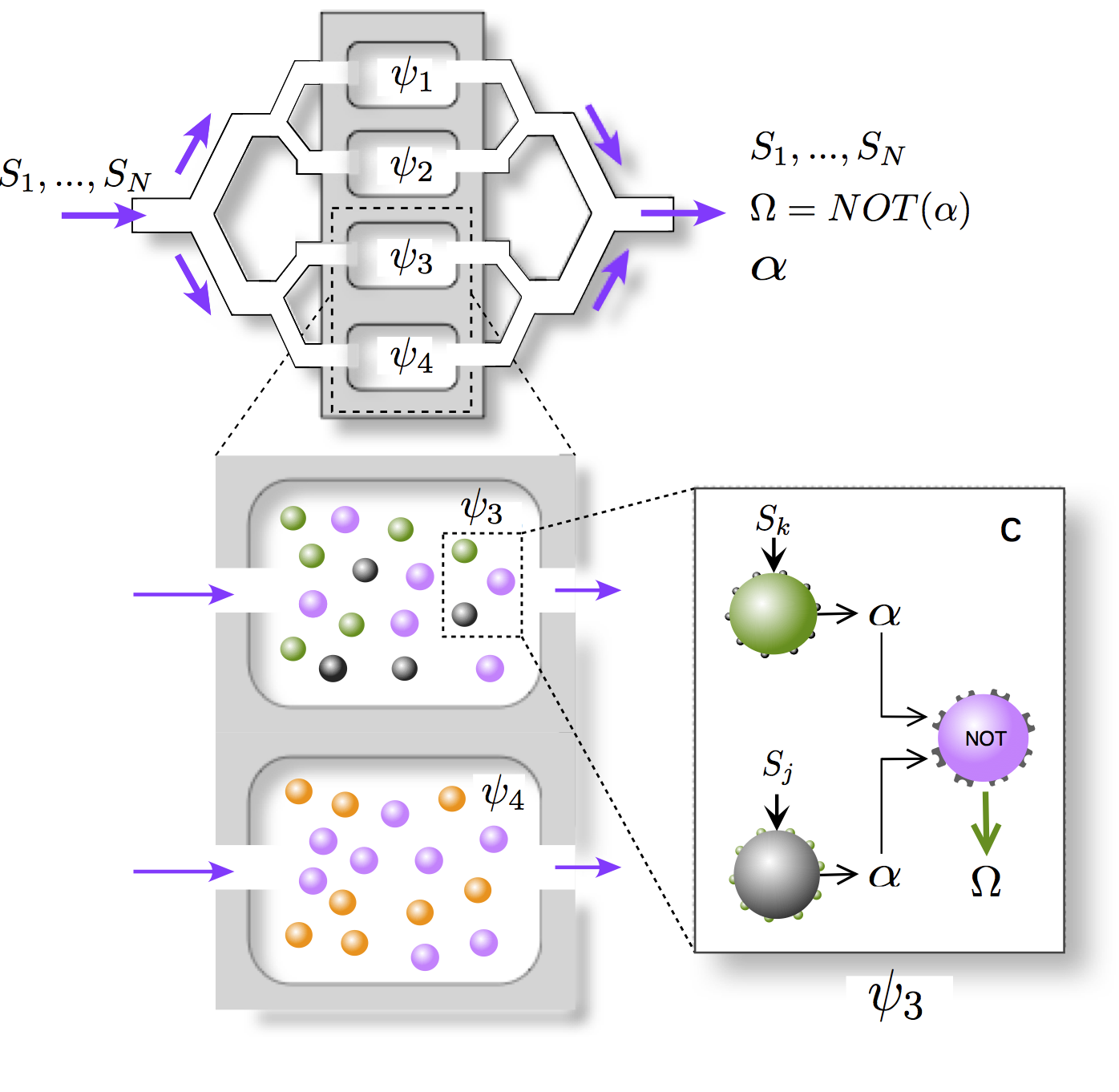Getting closer to biological computers
 The creation of circuits capable of carrying out the actions that we want in response to an external signal is one of the major challenges for synthetic biology. Despite the efforts devoted to the development of these devices, the results obtained are far from the level of complexity required for their application in the fields of biomedicine or the environment. Generally, the design of complex cell devices involves a massive application of genetic engineering that makes the cells unable to be reused. Furthermore, there is also a wiring problem: while in electronic circuits it suffices to use wires of the same type to conduct signals, in biological circuits the information is transmitted through different molecules in order to activate different genes. These networks are highly complex, with many connections and side effects that make it very difficult to apply predictable engineering.
The creation of circuits capable of carrying out the actions that we want in response to an external signal is one of the major challenges for synthetic biology. Despite the efforts devoted to the development of these devices, the results obtained are far from the level of complexity required for their application in the fields of biomedicine or the environment. Generally, the design of complex cell devices involves a massive application of genetic engineering that makes the cells unable to be reused. Furthermore, there is also a wiring problem: while in electronic circuits it suffices to use wires of the same type to conduct signals, in biological circuits the information is transmitted through different molecules in order to activate different genes. These networks are highly complex, with many connections and side effects that make it very difficult to apply predictable engineering.
Reducing genetic engineering to enable cell recycling
A research group led by Ricard Solé and Francesc Posas, both scientists at the Department of Experimental and Health Sciences (DCEXS), has created a new system that requires minimal genetic modifications and allows the use of a single molecule as a transmission tool. It consists of applying three simple changes to biological circuits. The first is the use of several different cell types, each one fitted with its own genetic design. So, instead of making modifications that often lead to unexpected changes in the complex circuitry of a single cell type, we apply slight genetic modifications to several cell groups that will cooperate to perform the desired response. The other two changes are the use of spatial segregation and distribution of products, which reduce the number of necessary connections.
The best aspect of this new system is that it allows the different cell groups to combine in many ways to obtain different results, as if they were Lego pieces that can be built in multiple ways. Following this premise, the researchers built a logic circuit with cells that respond to up to 6 inputs that can be rearranged to create up to 1.8x1019 different circuits. This opens the door to exploring circuits obtained by combining different cellular species and the synergies that can be derived from this coexistence.

Computing beyond electronics
We are talking about biological computers: conventional groups of genetically modified cells that act partly following binary logic (zeros and ones) but with a design that moves away from both electronic and biological designs. This type of system is highly flexible, easy to redesign and could allow creating groups of cells with the ability to make decisions under a variety of stimuli. This allows imagining applications related with "smart" biosensors or creating diagnostic kits, for example. Such tools enable progress towards personalized technology in which users design and build their devices based on the application they want to give them.
Work of reference: Macia J, Manzoni R, Conde N, Urrios A, de Nadal E, Solé R, Posas F. Implementation of Complex Biological Logic Circuits Using Spatially Distributed Multicellular Consortia. PLoS Comput Biol. February 2016 doi:10.1371/journal.pcbi.1004685.
